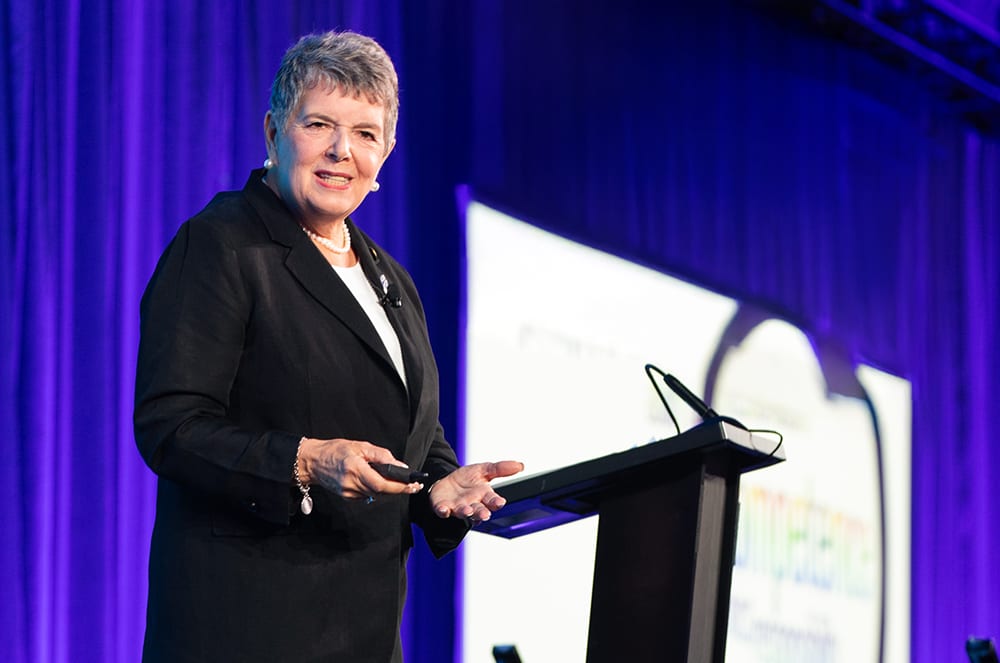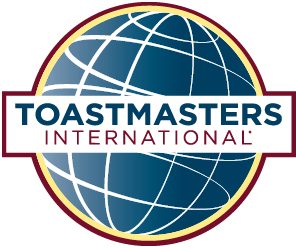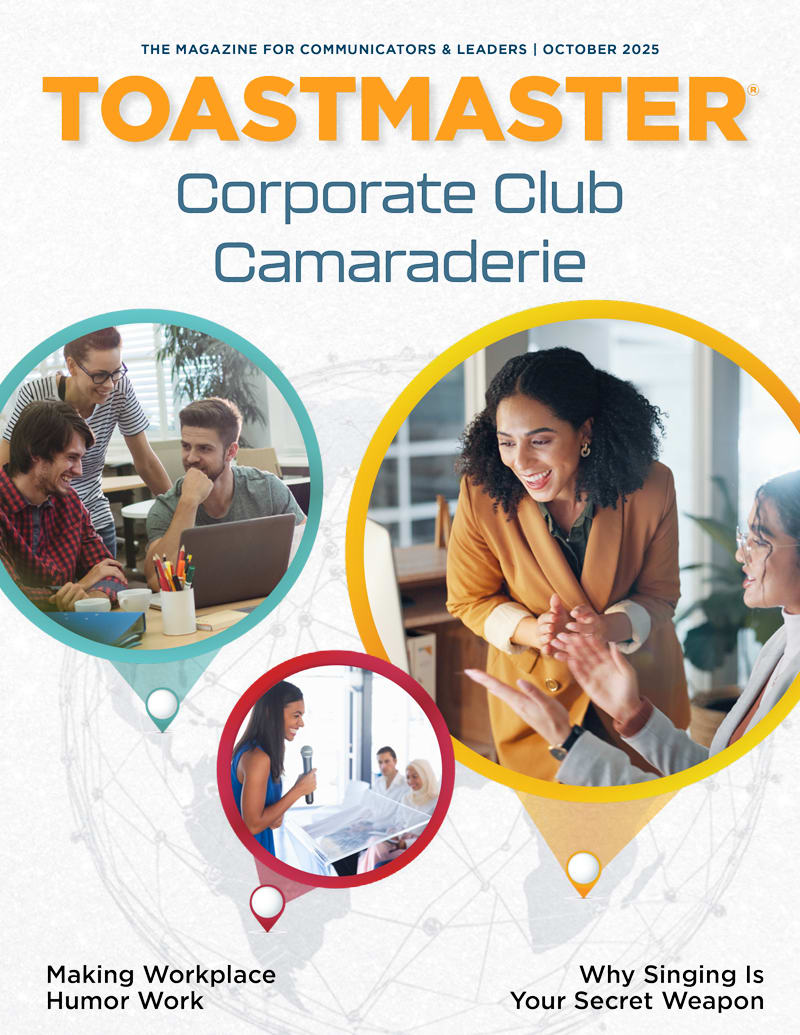

Pat Johnson, DTM, could fill a book with all she has learned about corporate Toastmasters clubs over the last 40 years. In fact, she wrote the definitive book on corporate clubs.
Johnson, Toastmasters’ International President in 2010–2011, believes there is no more perfect union than that between Toastmasters and companies eager to develop leaders.
And corporate clubs aiming for success just need to search the leadership ladder, looking upward.
“There’s nothing more powerful than [having a company leader], even if it’s the branch manager or the COO or CEO … come in and speak in favor of the Toastmasters program for their employees and recognize the transferable skills,” Johnson says.
Clubs that work well with their workplace have the eyes, ears, and especially the attention of decision-makers. This can prove invaluable when it comes to everything from recruiting new members to getting recognition for club accomplishments and officer efforts.
“We have to have accountability in the organization or we become invisible,” Johnson says.
Clubs without an official sponsor would be wise to connect with an influential manager. Johnson suggests that clubs go even further by presenting regular updates to key leaders, with metrics such as meeting attendance, number of prepared speakers, number of officers who attended trainings, and members who participated in District events or served on District committees.
“If I’m getting reports every three months, I’m not going to quickly forget that,” she notes.
Other ways to gain internal visibility:
- Encourage members to invite their managers to observe when they deliver a speech at a meeting.
- Notify managers when their employees have delivered an Ice Breaker speech, completed a Pathway level, or won an award or speech contest.
- Create an Honorary Toastmaster award and present it at a regular meeting to an invited executive or Board member.
- Encourage members to include their Toastmasters participation in their annual performance reviews as an example of training and personal development.
The average corporate club lasts only two years, Johnson says. Yet Toastmasters also has longstanding corporate clubs that have been active for decades. She suggests that Districts appoint a corporate liaison to visit clubs and that sponsors and mentors consider staying on even after their term of service has ended.
And don’t be afraid to adjust terms to better match the environment—instead of calling it a club, call it a “program.” A speech is a “presentation.” A meeting is a “session.” And Pathways is the “curriculum.”
Toastmasters is “complex from the outside because we've got all this ‘weird’ language and ways of doing things,” Johnson explains, “but it's all protocol that extends way out into the world and it still has applicability.”
Emily Sachs, DTM is a freelance writer in Brooklyn, New York. She is the Immediate Past District 19 Director and is a regular contributor to the Toastmaster magazine.


